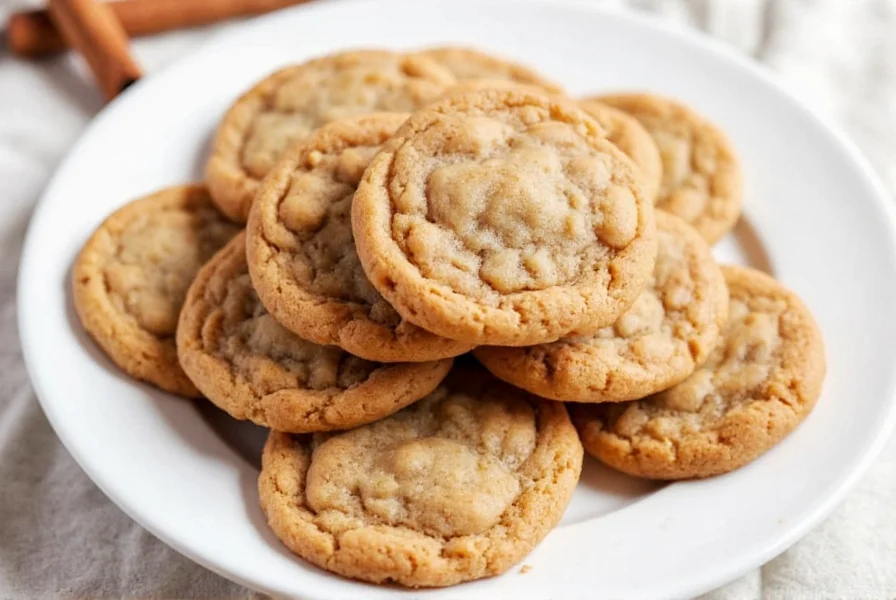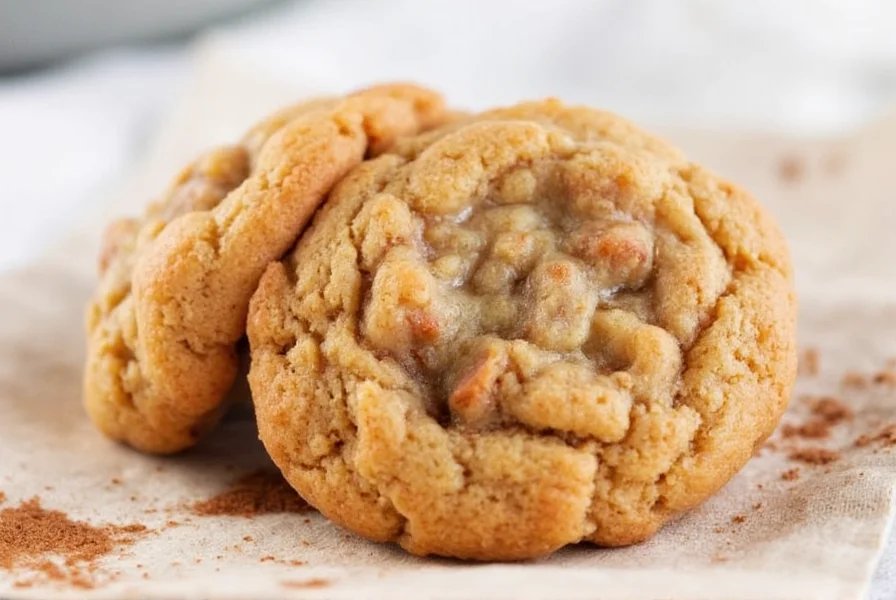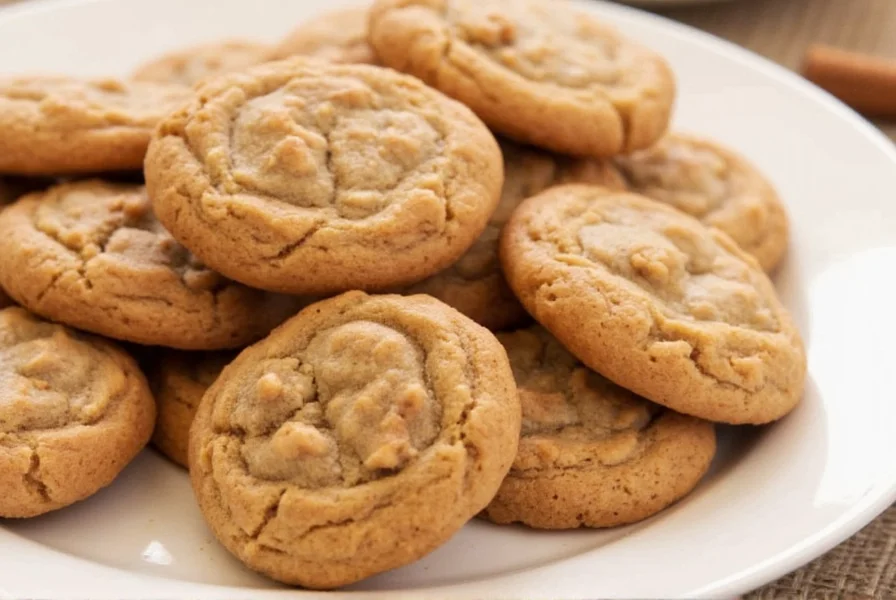Nothing compares to the comforting aroma of freshly baked cinnamon cookies filling your kitchen. These beloved treats combine the warm, nostalgic spice of cinnamon with the satisfying chew of perfectly baked cookie dough. While often confused with snickerdoodles (which use cream of tartar), authentic cinnamon cookies showcase the spice as their star ingredient without requiring specialized ingredients.
The Science Behind Perfect Cinnamon Cookies
Understanding the chemistry of your ingredients transforms good cookies into exceptional ones. Room-temperature butter (65-70°F) creams properly with sugars, incorporating air that creates lift during baking. The combination of granulated and brown sugar serves distinct purposes: white sugar promotes spread and crispness, while brown sugar's molasses adds moisture and chewiness. For optimal soft cinnamon cookies from scratch, maintain a 2:1 ratio of white to brown sugar.

Essential Ingredient Breakdown
Quality ingredients make the difference between ordinary and extraordinary cinnamon cookies:
| Ingredient | Function | Professional Tip |
|---|---|---|
| All-purpose flour | Structure and texture | Spoon and level flour; don't pack it into measuring cups |
| Unsalted butter | Flavor and texture | Use European-style butter (82% fat) for richer flavor |
| Granulated sugar | Crisp edges and spread | Process with cinnamon for ultra-fine spice distribution |
| Brown sugar | Moisture and chewiness | Pack firmly for consistent measurements |
| Cinnamon | Signature flavor | Use Ceylon cinnamon for complex flavor, not just heat |
Step-by-Step Baking Process
Follow these professional cinnamon cookie baking tips for consistent results:
- Cream properly: Beat butter and sugars for 3-5 minutes until light and fluffy. This incorporates air for proper rise.
- Chill the dough: Refrigerate for at least 2 hours (or up to 72 hours). This prevents excessive spreading and enhances flavor development.
- Perfect cinnamon-sugar coating: Mix 1/4 cup granulated sugar with 2 tablespoons cinnamon. Roll chilled dough balls thoroughly in mixture.
- Bake strategically: Place cookies 2.5 inches apart on parchment-lined baking sheets. Bake at 350°F (175°C) for 10-12 minutes until edges are set but centers appear slightly underbaked.
- Cool correctly: Let cookies rest on baking sheet for 5 minutes before transferring to wire racks. This allows structure to set without over-baking.
Common Mistakes and Solutions
Avoid these frequent errors when making chewy cinnamon cookies:
- Using baking powder/soda unnecessarily: Unlike snickerdoodles, traditional cinnamon cookies don't require leaveners if properly creamed.
- Incorrect cinnamon type: Cassia cinnamon (common in stores) is harsher than Ceylon. For delicate cookies, use a 50/50 blend or pure Ceylon.
- Overbaking: Cookies continue cooking on the baking sheet. Remove when centers still look slightly soft.
- Dough too warm: Warm dough spreads excessively. If kitchen is hot, chill dough balls for 10 minutes before baking.
Variations for Different Dietary Needs
Adapt this classic recipe while maintaining texture and flavor integrity:
- Gluten-free cinnamon cookies: Substitute with 1:1 gluten-free flour blend and add 1/4 teaspoon xanthan gum.
- Vegan cinnamon cookies: Replace butter with vegan butter sticks (not spreads) and use flax egg (1 tbsp ground flax + 3 tbsp water).
- Reduced sugar version: Decrease total sugar by 25% and add 1-2 tbsp applesauce to maintain moisture.

Storage and Serving Recommendations
Maximize freshness and flavor with these professional techniques:
- Short-term storage: Keep in airtight container with slice of bread to maintain softness for up to 5 days.
- Freezing dough: Portion dough balls, freeze solid, then transfer to freezer bags. Bake from frozen, adding 1-2 minutes to baking time.
- Serving suggestion: Pair with cold milk or vanilla ice cream. For special occasions, sandwich cookies with cinnamon-spiked buttercream.
Troubleshooting Guide
Resolve common issues with these targeted solutions:
- Problem: Cookies spread too much
Solution: Chill dough longer, check oven temperature with independent thermometer, reduce butter temperature - Problem: Cookies too cakey
Solution: Measure flour correctly (spoon and level), avoid overmixing after adding flour - Problem: Cinnamon flavor too weak
Solution: Bloom cinnamon in melted butter before mixing, use fresher cinnamon (replace every 6 months) - Problem: Cookies too dry
Solution: Increase brown sugar ratio, reduce baking time by 1-2 minutes, add 1 tbsp corn syrup to dough
Frequently Asked Questions
Why are my cinnamon cookies flat?
Flat cookies typically result from warm dough, excessive sugar, or insufficient flour. Chill your dough for at least 2 hours before baking, verify your flour measurement technique (spoon and level, don't scoop), and ensure your butter is at proper temperature (65-70°F). Oven temperature that's too low can also cause excessive spreading.
What's the ideal cinnamon to sugar ratio for coating?
The perfect coating uses a 4:1 ratio of sugar to cinnamon (4 parts sugar to 1 part cinnamon). This creates noticeable spice without overwhelming heat. For stronger cinnamon flavor, use a 2:1 ratio. Always mix the coating ingredients thoroughly and roll chilled dough balls generously to ensure even coverage that adheres during baking.
Can I make cinnamon cookies without cream of tartar?
Absolutely. Traditional cinnamon cookies don't require cream of tartar - that's specific to snickerdoodles. Authentic cinnamon cookies rely on proper creaming technique and sugar ratios for their texture. Omitting cream of tartar won't affect your cinnamon cookies' structure as long as you follow the proper mixing and chilling procedures outlined in this recipe.
How do I prevent cinnamon cookies from becoming hard?
To maintain softness, slightly underbake cookies (remove when centers still look soft), store with a slice of bread to retain moisture, and use a higher proportion of brown sugar. The molasses in brown sugar attracts and retains moisture. Avoid overmixing the dough after adding flour, as this develops gluten which can lead to tougher cookies.
What's the best type of cinnamon for cookies?
Ceylon cinnamon offers a more complex, delicate flavor compared to the sharper Cassia cinnamon commonly found in supermarkets. For the best results, use a 50/50 blend of both types. Ceylon provides nuanced flavor while Cassia delivers the familiar spicy warmth. Always use freshly ground cinnamon for maximum flavor impact, as pre-ground cinnamon loses potency within 6 months.











 浙公网安备
33010002000092号
浙公网安备
33010002000092号 浙B2-20120091-4
浙B2-20120091-4